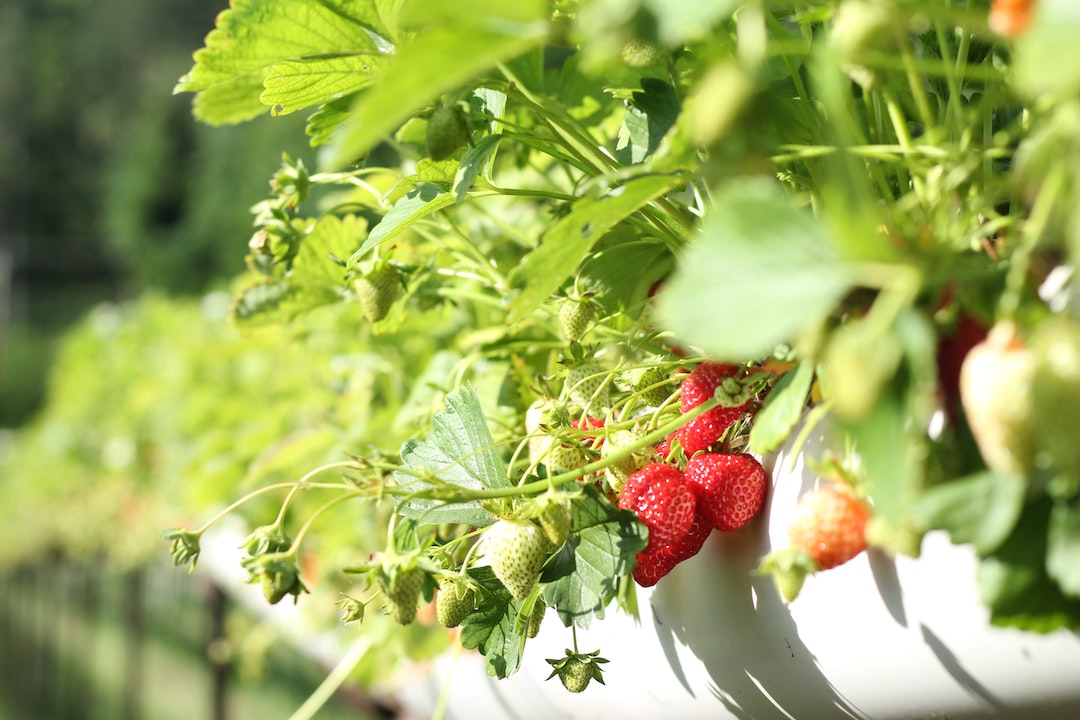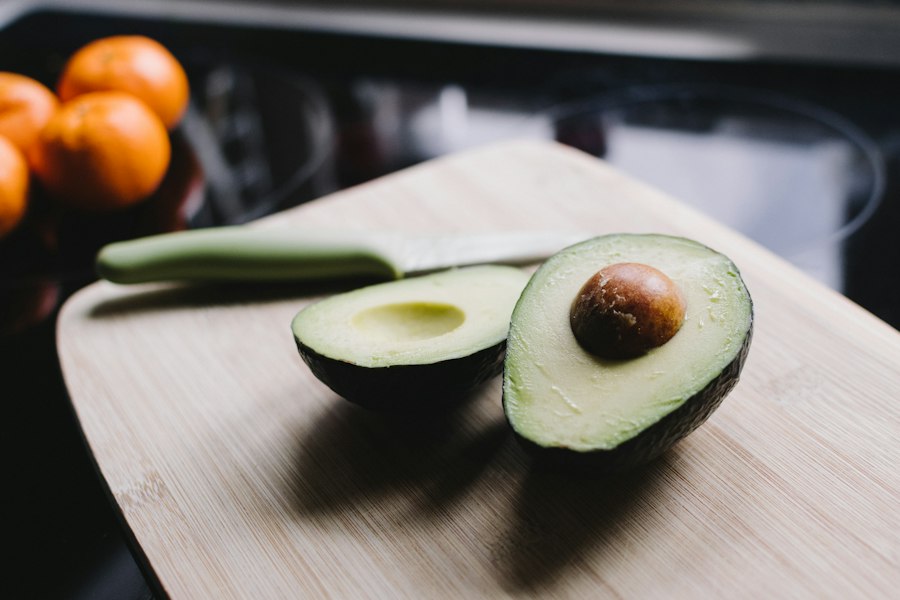Tomatillo Time: How to Tell When Your Tomatillos are Ripe

Tomatillos, also known as Mexican husk tomatoes, are a staple ingredient in Mexican cuisine. They have a long and rich history, dating back to ancient Mesoamerican civilizations such as the Aztecs and Mayans. Tomatillos are native to Mexico and were cultivated by these civilizations for their unique flavor and versatility in cooking.
In Mexican cuisine, tomatillos are used in a variety of dishes, including salsas, sauces, stews, and soups. They have a tart and slightly citrusy flavor that adds a tangy kick to any dish. Tomatillos are also known for their thickening properties, making them an excellent addition to sauces and salsas.
In addition to their delicious taste, tomatillos are also packed with nutritional benefits. They are low in calories and fat, making them a healthy choice for those watching their weight. Tomatillos are also a good source of dietary fiber, vitamin C, vitamin K, and potassium. They are also rich in antioxidants, which help protect the body against free radicals and reduce the risk of chronic diseases.
Key Takeaways
- Tomatillos are a versatile ingredient in Mexican cuisine.
- Harvesting tomatillos at the right time is crucial for flavor and texture.
- Ripe tomatillos can be identified by color, texture, size, firmness, weight, and aroma.
- Taste testing and checking the husk are reliable methods to assess tomatillo maturity.
- Storing and preserving tomatillos properly can help maintain their freshness.
Understanding the Growth Cycle of Tomatillos: From Flowering to Ripening
Tomatillos go through several stages of growth before they are ready to be harvested. The first stage is flowering, where small yellow flowers appear on the plant. These flowers are pollinated by bees and other insects, which then develop into small green fruits.
After pollination, the tomatillos begin to grow and mature. They start off as small green fruits and gradually increase in size over time. The fruits continue to ripen on the plant until they reach their optimal size and color.
Several factors can affect the growth and ripening of tomatillos. Temperature, sunlight exposure, and soil conditions all play a role in how quickly or slowly the tomatillos mature. Additionally, the variety of tomatillo can also affect the growth cycle, with some varieties taking longer to ripen than others.
The timeframe for harvesting tomatillos can vary depending on these factors. On average, it takes about 70 to 90 days from planting to harvest. However, it is important to monitor the plants closely and harvest the tomatillos at the right time to ensure optimal flavor and texture.
The Importance of Harvesting Tomatillos at the Right Time: Flavor and Texture Considerations
Harvesting tomatillos at the right time is crucial for achieving the best flavor and texture. If harvested too early, the tomatillos may be underripe and lack flavor. On the other hand, if harvested too late, they may become overripe and mushy.
When tomatillos are harvested at their peak ripeness, they have a bright green color and a firm texture. The flavor is tangy and slightly sweet, with a hint of citrus. The seeds inside the tomatillos should be fully developed but still tender.
Harvesting tomatillos too early can result in a sour or bitter taste. The fruits may also be hard and difficult to peel. On the other hand, if left on the plant for too long, the tomatillos can become soft and mushy. Overripe tomatillos may also develop a fermented or off-putting taste.
To determine the optimal time for harvesting, it is important to monitor the plants closely and look for visual cues, as well as use other senses such as touch, smell, and taste.
Visual Cues to Identify Ripe Tomatillos: Color, Texture, and Size
| Visual Cues | Identifiers |
|---|---|
| Color | Green to yellow-green |
| Texture | Firm and smooth |
| Size | 2-3 inches in diameter |
One of the easiest ways to determine if a tomatillo is ripe is by looking at its color. Ripe tomatillos have a bright green color that is uniform throughout the fruit. They should not have any spots or discoloration. The husk should also be dry and papery.
In terms of texture, ripe tomatillos should be firm but not hard. They should yield slightly to gentle pressure, similar to a ripe tomato. If the tomatillo feels soft or mushy, it is likely overripe and should be discarded.
Size can also be an indicator of ripeness. Ripe tomatillos are typically about the size of a golf ball or slightly larger. If the tomatillo is significantly smaller or larger than this, it may not be fully ripe.
It is important to note that tomatillos can vary in color and size depending on the variety. Some varieties may have a yellow or purple hue when ripe, while others may be smaller or larger in size. It is best to refer to the specific variety’s characteristics when determining ripeness based on visual cues.
How to Touch and Feel Tomatillos to Determine Ripeness: Firmness and Weight
Another way to assess the ripeness of a tomatillo is by touching and feeling it. Ripe tomatillos should have a firm texture, similar to a ripe tomato. They should yield slightly to gentle pressure but should not feel hard or mushy.
When picking up a tomatillo, it should feel heavy for its size. This indicates that it is filled with juice and has reached its optimal ripeness. If the tomatillo feels light or hollow, it may be underripe and lacking in flavor.
It is important to handle the tomatillos gently when assessing their firmness and weight. Squeezing too hard can bruise the fruit and affect its quality.
The Smell Test: Detecting Aroma Changes in Tomatillos as They Mature

The aroma of a tomatillo can also provide valuable information about its ripeness. As the tomatillos mature, their aroma changes from a grassy or vegetal scent to a more fruity and sweet aroma. This change in aroma is a good indicator that the tomatillo is ripe and ready to be harvested.
To use the smell test, simply pick up a tomatillo and give it a gentle sniff. If it has a pleasant, fruity aroma, it is likely ripe. If it has a strong or pungent smell, it may be overripe or starting to spoil.
It is important to note that the smell test should be used in conjunction with other methods of determining ripeness, as the aroma can vary depending on the variety of tomatillo.
Taste Testing Tomatillos: A Surefire Way to Evaluate Ripeness and Flavor
One of the most reliable ways to determine the ripeness and flavor of a tomatillo is by tasting it. Ripe tomatillos should have a tangy and slightly sweet flavor, with a hint of citrus. The texture should be firm but not hard, with tender seeds inside.
To taste test a tomatillo, simply remove the husk and take a small bite. Pay attention to the flavor and texture. If the tomatillo tastes sour or bitter, it may be underripe. If it tastes overly sweet or fermented, it may be overripe.
It is important to note that tasting tomatillos can be subjective, as everyone’s taste preferences are different. However, if the flavor and texture are not to your liking, it is best to wait a little longer before harvesting.
Checking the Husk: A Reliable Method to Assess Tomatillo Maturity
The husk of a tomatillo can provide valuable information about its maturity. When a tomatillo is ripe, the husk should be dry and papery. It should easily peel away from the fruit without any resistance.
If the husk is still green and tightly attached to the fruit, it is likely underripe and should be left on the plant to continue maturing. On the other hand, if the husk is brown or shriveled, it may be overripe and past its prime.
When checking the husk, it is important to handle the tomatillo gently to avoid bruising or damaging the fruit.
Tips for Storing and Preserving Tomatillos: Best Practices for Maximum Freshness
To maximize the freshness and shelf life of tomatillos, it is important to store them properly. Tomatillos can be stored at room temperature for a few days, but they are best kept in the refrigerator to extend their freshness.
To store tomatillos in the refrigerator, place them in a perforated plastic bag or a container with ventilation. This will help prevent moisture buildup and keep the tomatillos fresh for longer. Avoid washing the tomatillos before storing them, as excess moisture can cause them to spoil more quickly.
If you have an abundance of tomatillos and want to preserve them for later use, there are several methods you can try. Tomatillos can be frozen, canned, or made into salsas or sauces and then stored in the freezer. Each method has its own set of instructions and considerations, so it is best to follow a trusted recipe or consult a reliable source for guidance.
When using preserved tomatillos, it is important to thaw them properly before using. Thaw frozen tomatillos in the refrigerator overnight or use the defrost function on your microwave.
Enjoying the Fruits of Your Labor – Delicious Tomatillo Recipes to Try.
Now that you know how to determine the ripeness of tomatillos and how to store them properly, it’s time to put your knowledge into action and enjoy some delicious recipes featuring this versatile ingredient.
One popular recipe that showcases the tangy flavor of tomatillos is salsa verde. This vibrant green salsa is made by blending tomatillos with onions, garlic, cilantro, and jalapenos. It can be used as a dip for tortilla chips, a topping for tacos or enchiladas, or a marinade for grilled meats.
Another delicious way to enjoy tomatillos is by making a traditional Mexican stew called pozole verde. This hearty dish features tender chunks of pork or chicken simmered in a flavorful broth made with tomatillos, hominy, and spices. It is typically garnished with shredded cabbage, radishes, and lime juice.
If you’re looking for a refreshing and light salad, try making a tomatillo and avocado salad. Simply slice ripe tomatillos and avocados and toss them with lime juice, olive oil, salt, and pepper. This salad pairs well with grilled meats or can be enjoyed on its own as a light lunch or dinner.
Incorporating tomatillos into your cooking can add a unique and delicious flavor to your dishes. Whether you’re making salsas, stews, or salads, tomatillos are a versatile ingredient that can elevate any Mexican-inspired meal.
In conclusion, tomatillos are a versatile ingredient in Mexican cuisine that adds a tangy kick to any dish. They have a long and rich history and are packed with nutritional benefits. Understanding the growth cycle of tomatillos and harvesting them at the right time is crucial for achieving optimal flavor and texture. Visual cues, touch and feel, smell, taste testing, and checking the husk are all methods that can be used to determine ripeness. Storing and preserving tomatillos properly will help maximize their freshness. With these tips in mind, you can confidently incorporate tomatillos into your cooking and enjoy the delicious fruits of your labor.



